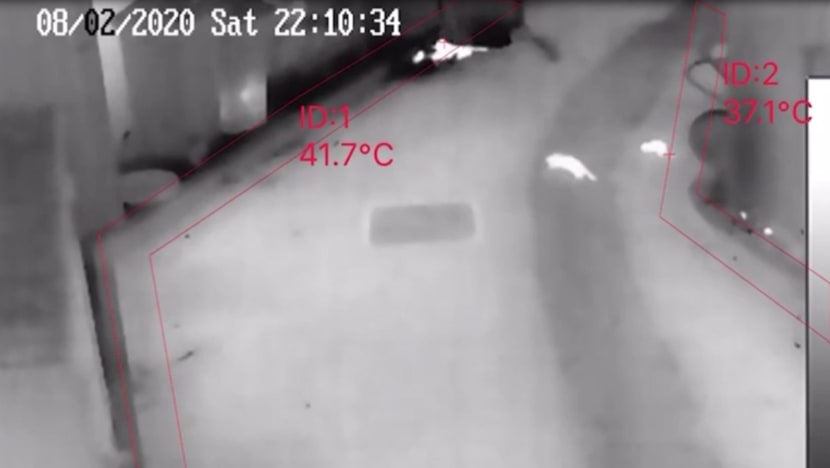Trial of thermal imaging cameras for rat surveillance to begin at 2 locations next week
Thermal imaging cameras are more discrete and help with monitoring rats in dark back-lane areas at night, said NEA.

A screenshot shows rats picked up by a surveillance camera with thermal detection capabilities. (Image: National Environment Agency)

This audio is generated by an AI tool.
SINGAPORE: The National Environment Agency (NEA) will begin trialling the use of cameras with thermal detection capabilities to monitor rat hotspots from next week.
The agency will start with four to eight cameras for each of two hotspots - depending on the size of the area - to detect rats via their body heat in outdoor and back-lane areas.
The cameras will be gradually rolled out to other locations during the four-month trial period, said NEA, without specifying the sites that will be monitored.
The enhanced measures against rats come as Singapore recorded more rat burrows, with the agency noting an average of 4,163 in 2022 to 5,203 in 2023 in public areas per two-monthly survey cycle.
Thermal imaging cameras will be deployed for two weeks at the first two locations. The authorities will then analyse the results and reach out to stakeholders, such as premise operators, to put measures in place.
"Enforcement action may be taken depending on the observations and follow-up inspections carried out by NEA," the agency said in a statement on Monday (Apr 15).
Thermal cameras may be deployed at the same locations for another two weeks to measure the success of the intervention measures.
Data from the thermal imaging cameras will be used to help premise operators better coordinate cleaning, waste management and rat control measures. These can also be used in investigations against errant food establishments that fail to properly manage waste.
The agency said thermal imaging cameras help with rat surveillance by discreetly monitoring dark back-lane areas at night without disturbing the nocturnal creatures, as opposed to the challenge of having an NEA officer move around with a torchlight.
The pilot was announced during Budget 2024, when the spending plans for the Ministry of Sustainability and the Environment (MSE) were outlined in Parliament earlier this year.
Complaints about rat sightings were on a rise, according to pest busters, who said they received more related enquiries.
They cited wet weather as a reason for more sightings, as rain flushed the pests into the open. Exposed food waste, improper disposal of trash at food establishments also attract the rodents.
Rats can transmit diseases through their urine, droppings or fleas on their bodies. They could be the reason for a rise in leptospirosis cases in dogs earlier this year.
Proper disposal of food waste can help tackle the problem of rats and premise owners are responsible for ensuring the proper bagging and disposal of waste.
NEA and the Singapore Food Agency (SFA) will be enhancing enforcement of waste management at food premises and bin centres.
The agencies have been conducting checks to ensure that licensees adopt proper waste disposal measures, such as ensuring that food waste is not left uncovered overnight.
They will also conduct targeted operations on poor-performing food establishments and take action against those who do not properly manage their food.
Apart from preventing access to food sources, such establishments should also keep their premises in good condition to deter rat habitation.
This includes treating and sealing inactive rat burrows and ensuring that there are no gaps in building structures or false ceilings that rats could use to enter or find shelter.
















